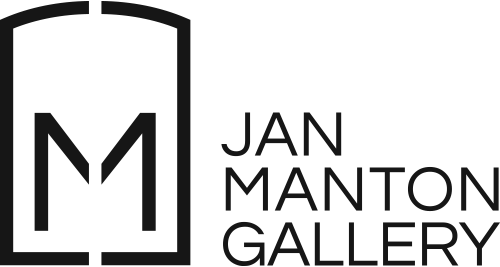From the Studio - Interview with Judith Wright | 24.03.22
In our latest From the Studio interview, the JMG team visits Judith Wright's studio to take a look at the new works in her upcoming show Intimate Dialogues showing from 30 March - 24 April 2022. Intimate Dialogues encompasses paintings on paper, hanging mobiles, and sculptures on and off the wall, and sees Judith introduce animals as a metaphor to broaden the human-to-human dialogue, as well as explore her earlier interest in the vulnerability of the human condition.
Judith sits down with Gallery Communications Embie Tan Aren to speak more about the histories entangled in her work, the relationship between humans and the environment, and the need to embrace the animal world through dialogue...
Embie Tan Aren: Judith, thank you for having me in your studio today. Animals, and the animal world, have a striking presence in your new body of work Intimate Dialogues. Could you tell me more about this relationship between the human and the animal, or the human and the ‘other’?
Judith Wright: In Intimate Dialogues, I’ve come back to my earlier interests. I’ve always been interested in the vulnerability of the human condition in times of love and loss. Communication and dialogue are necessary tools for trying to heal from, and come to terms with, those situations.
These works have various reference points to ‘carnival’ and myth. They also introduce animal imagery as a way of connecting with the animal world, beyond our established human connections with each other, our families, and our friends. It’s a new metaphor in my work simply because I’m becoming more conscious of our deteriorating natural environments, and the role that humans have had in this. By embracing the animal world, I hope to broaden our human-to-human dialogue to a wider sphere of knowing and being.
E: The image of the eye, which appears quite a bit here, also had a strong presence in your previous exhibition, Covid Carnivale. It seems to create a closeness between bodies and an engagement of dialogue.
J: Yes. The symbol of the eye is still present because of its many connotations throughout history. It's such a strong metaphor for the soul.
E: Is there a specific dialogue or narrative in your practice?
J: Definitely not. It’s mostly an intuitive thing. It just comes from where it comes from. Rather than being a linear thing, my practice has always had a circular dimension to it—I come back to a more minimal work, and then go into something else again. It’s just the nature of it.
E: In Intimate Dialogues #15, we see a bird overlaid with a human and another animal in a way which seems to morph them into a unified shape. What interests you about the way bodies can intertwine and operate in a space together?
J: My interest in the body comes back to my original career as a dancer. When I first joined the Australian Ballet, I became very aware of the importance of space. The placement of something in space is what choreographers do all the time. Communication is a physical thing as much as anything else—it's not always verbal.
There is also an awareness of space that exists in the dialogue between the objects and the wall pieces. I’ve included works on paper too because the sense of touch they exude is important. The paper has a human-like scale, relating directly to a bodily span.
E: I understand Japanese paper is what you usually work with. Are these works also on Japanese paper?
J: Yes. I've done that ever since I began making art. It certainly has a handmade look to it, but what appeals to me is the fact that it's so tough—well, one of the factors. Even though it appears to be very fragile, the paper is in fact really tough. In a way, it’s like skin, which is very vulnerable but always heals. There is an inner strength to it.
E: When you come into your studio to work, do you know exactly what you want to make?
J: I usually have a clear idea of what I'm going to do before I start, but I don’t plan it, I have to wait for it to come. If I don't have that idea, then I can't work.
E: Could you tell me more about the hanging mobile sculptures?
J: These little things are wooden off-cuts from larger works. I look for shapes in them, and mark them out, like finding images in clouds. I don’t change the piece of wood to fit the image—I feel it’s necessary to keep the integrity of the idea.
E: So you’re working with what has been left over from previous works, keeping the original materiality intact?
J: Yes. I’m always finding the shape within the space. Unfortunately, I live very close to an antique shop. When I need something such as a structure to hang things from, I scrounge around there. Living close to the antique shop can be a bit too handy at times.
E: It’s a bit too easy to walk in there and buy something!
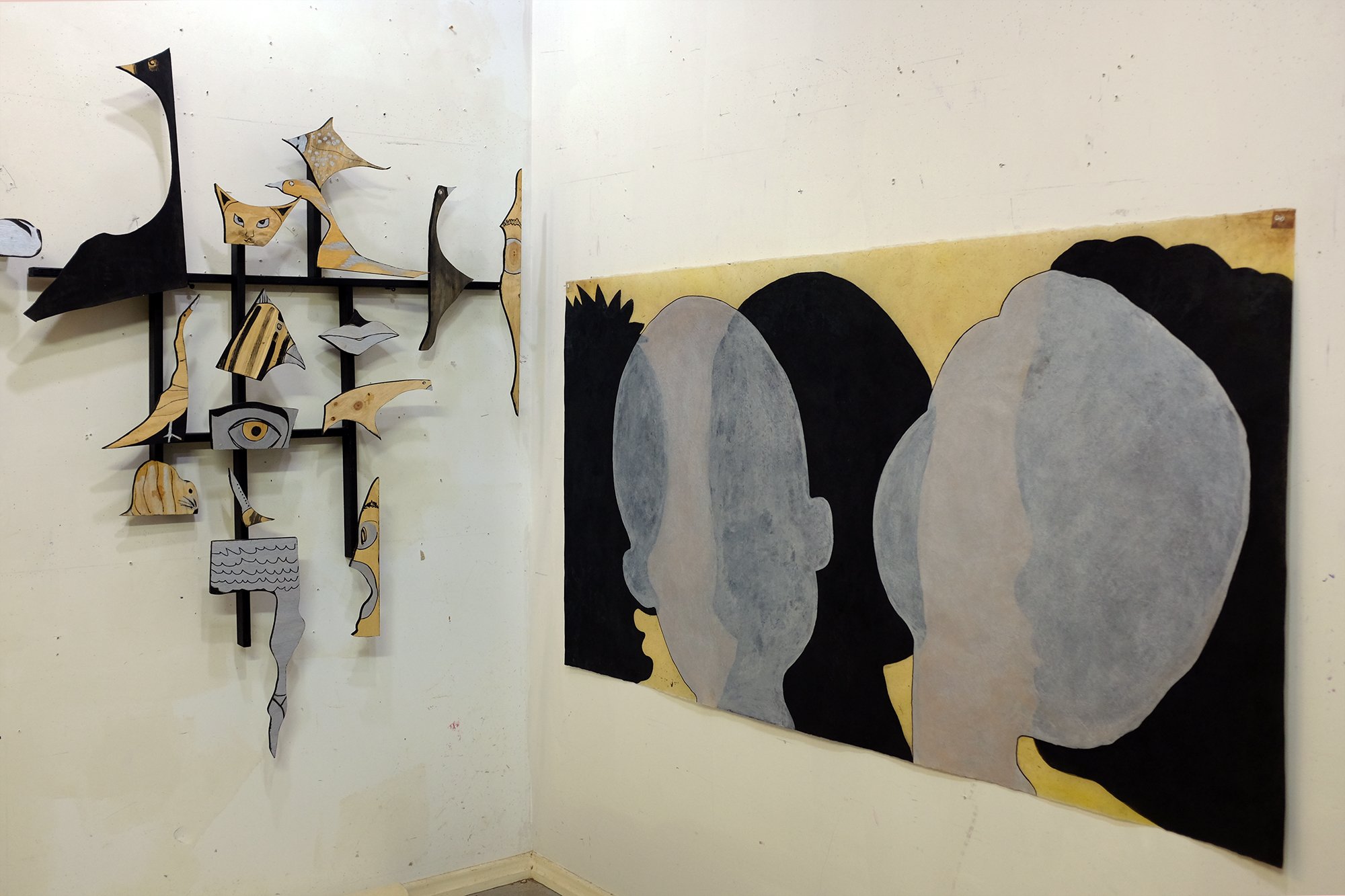
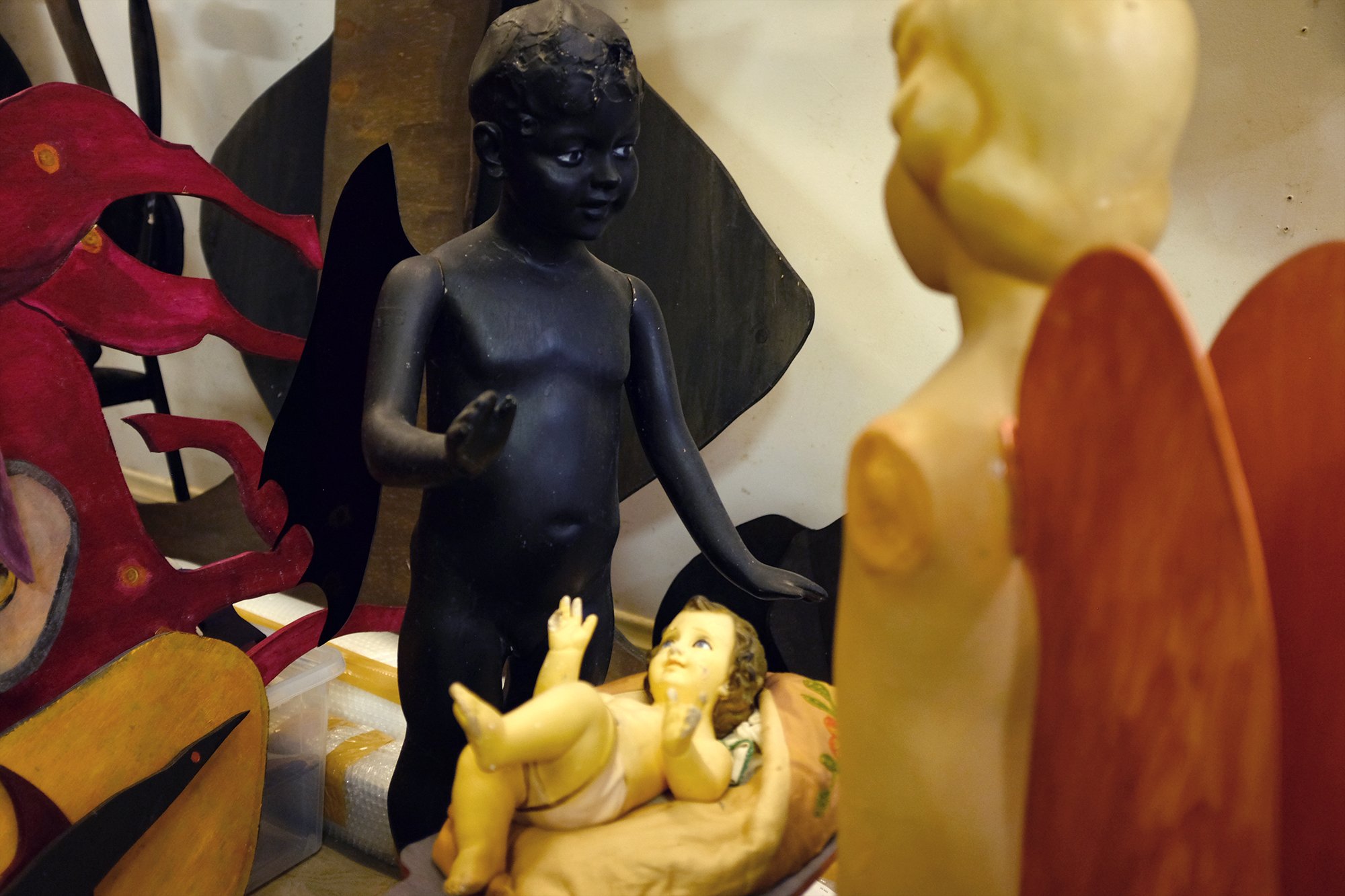
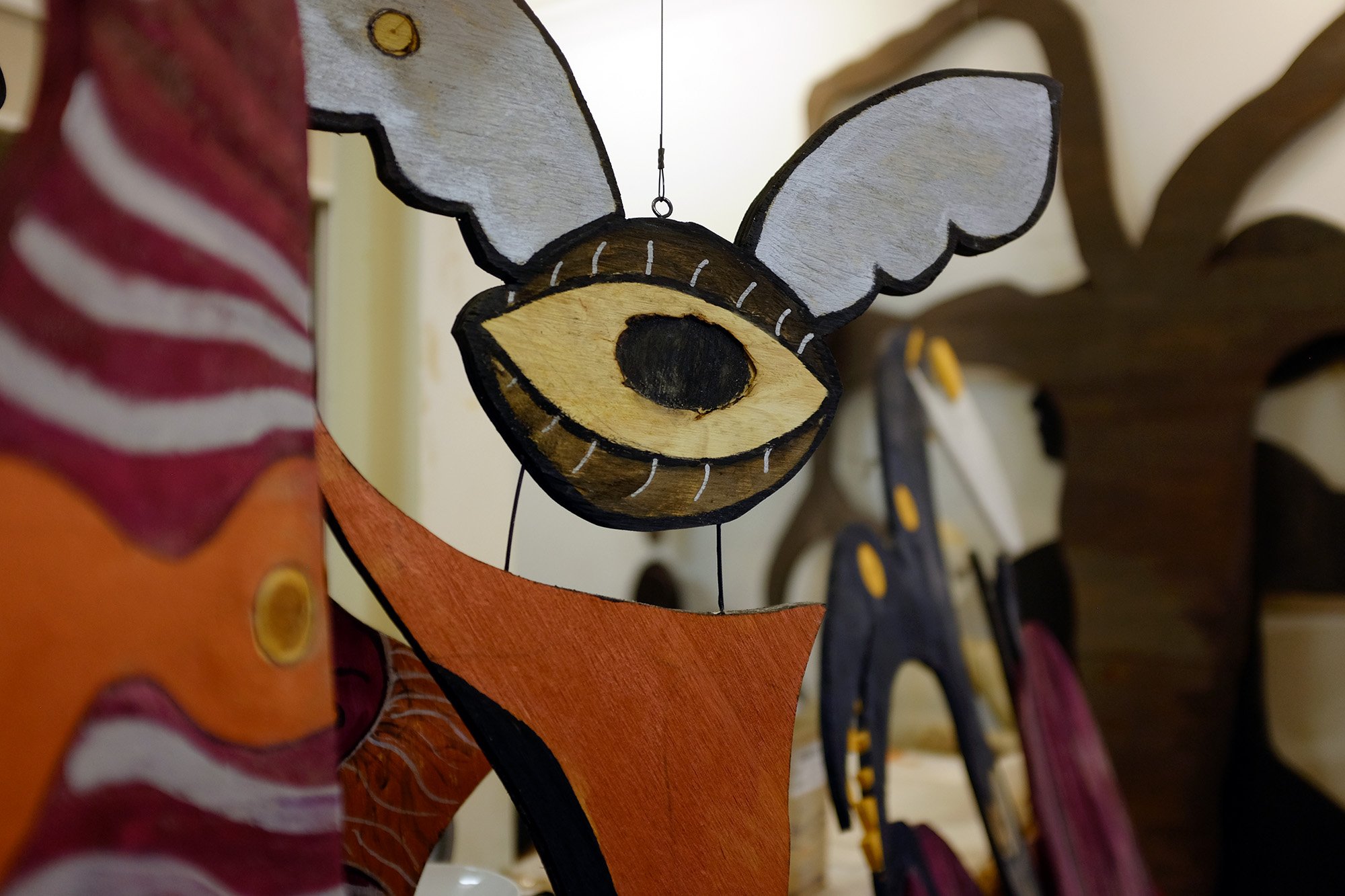
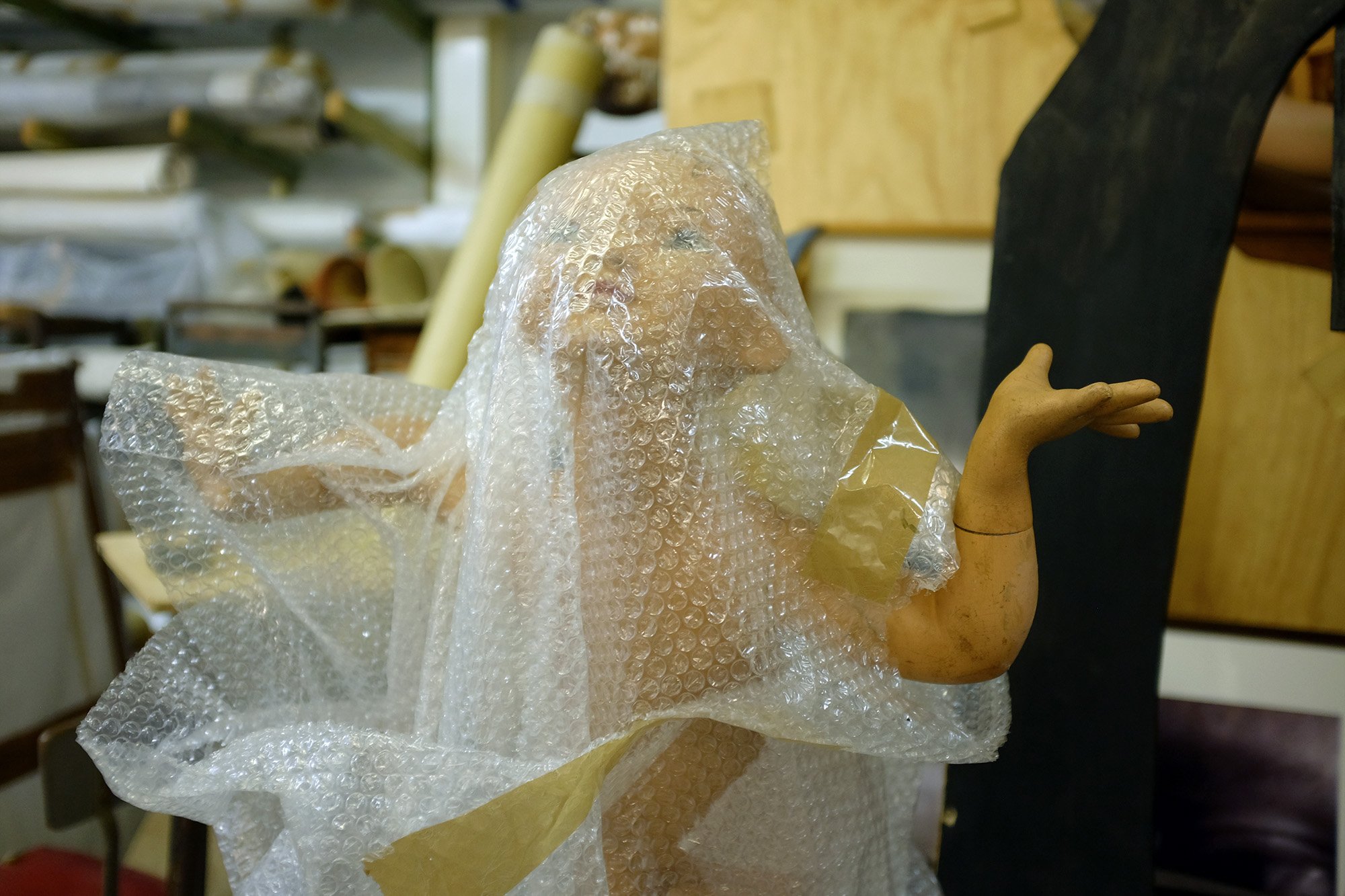

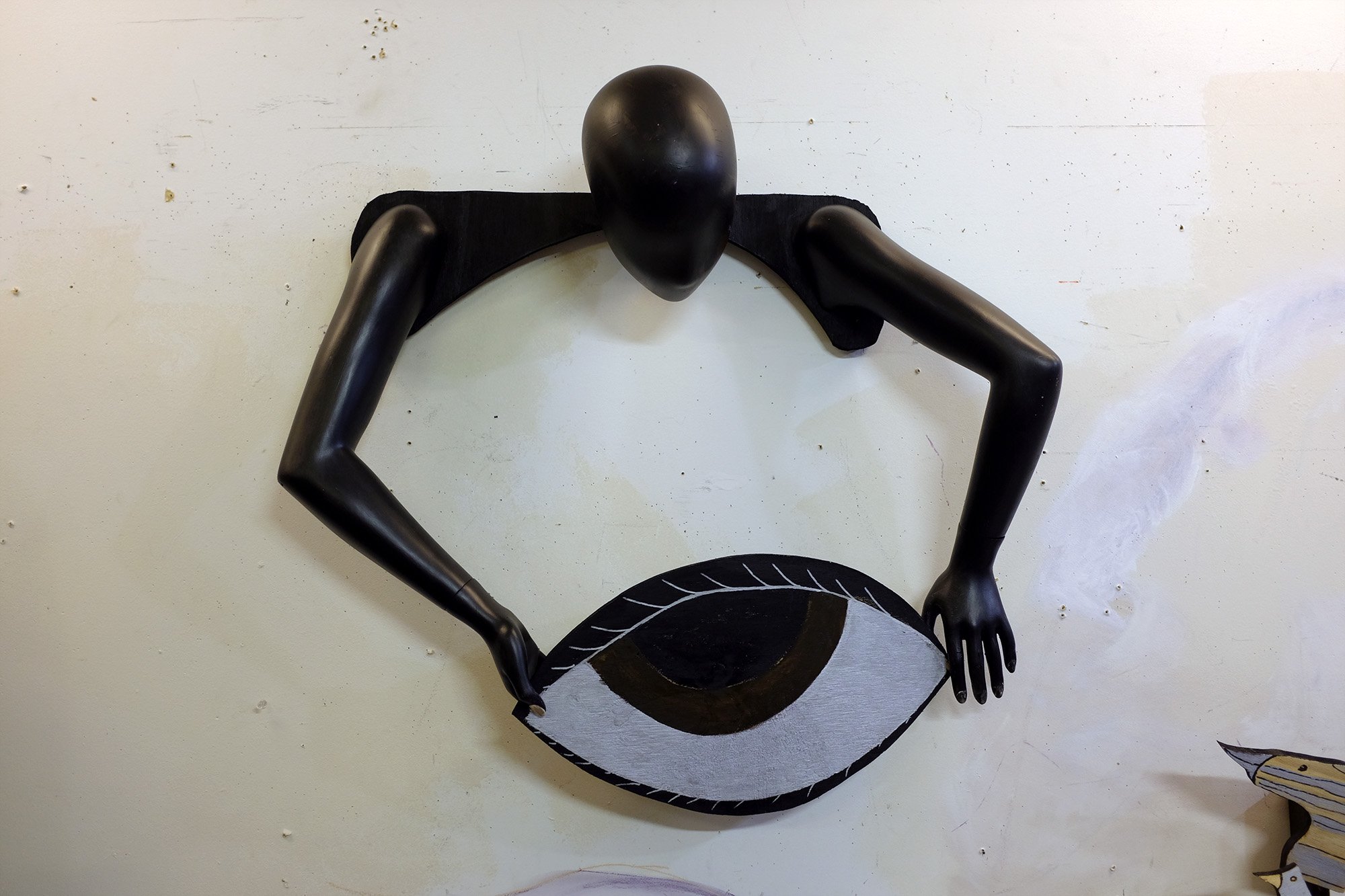
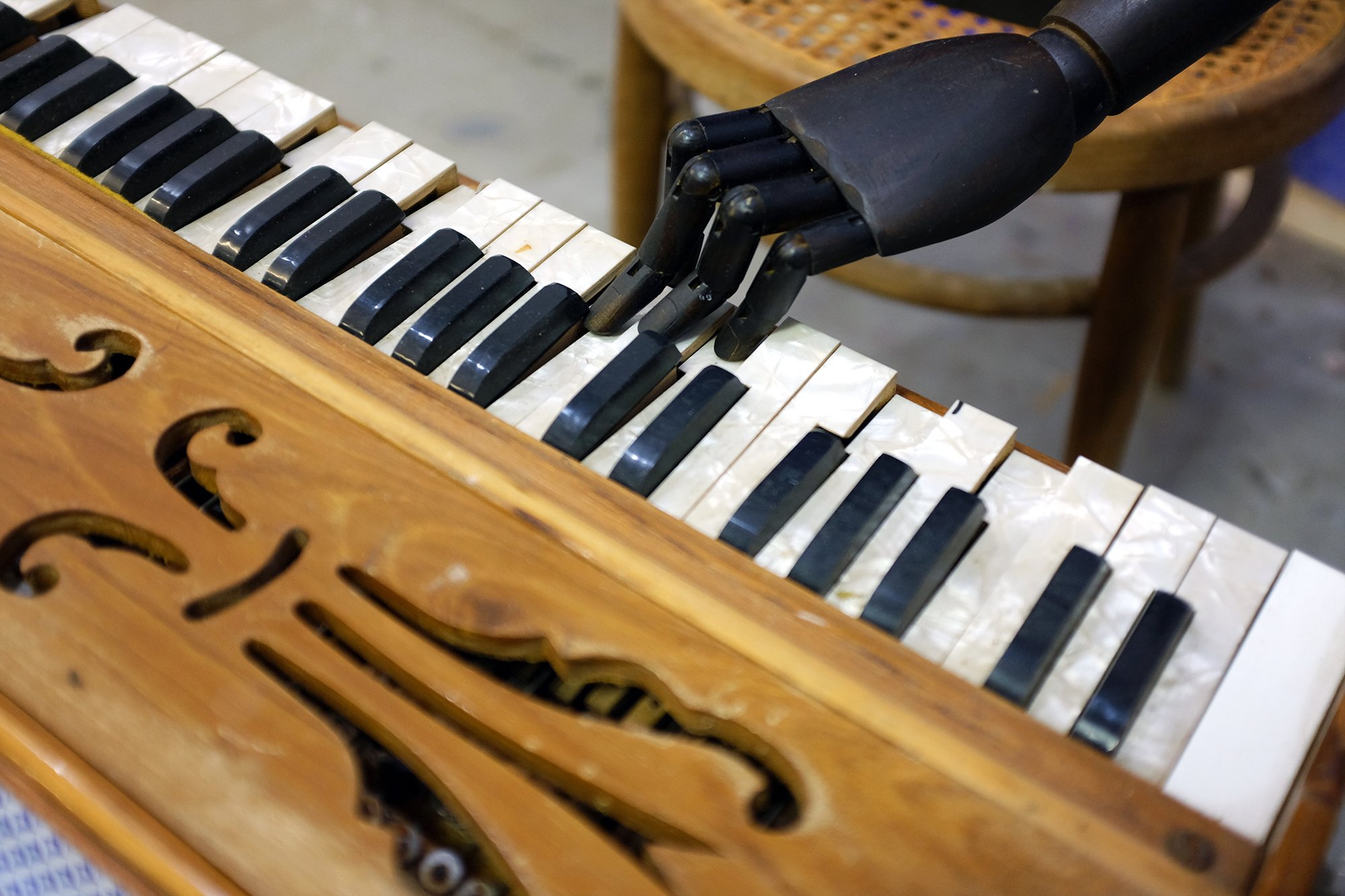
J: Exactly. That mannequin also came from there, as did the chair. Those ballet shoe lasts [foot moulds from which shoes are made] are from my former husband's ballet shoe factory. They go back a long way. When I was a dancer, I would have had shoes made from lasts like that. They recur a lot in my work simply because I have so many of them and have such a strong historical connection to them. I’m always reinventing histories.
E: How about this small piano piece?
J: It’s a strange little thing. A friend gave that to me about 20 years ago and this is the first time I’ve used it. It’s been sitting in the studio looking for a home, so I thought I should finally do something with it. I don't know what they're called, but it's not an accordion.
E: It seems quite portable because of its size. Something a travelling musician might like.
J: You’re probably right. It used to live in a wooden box which seemed to be portable. I have no idea of its history. The person who gave it to me, who isn't around anymore, probably didn’t know anything about it either.
E: Alongside works on paper and hanging mobiles, Intimate Dialogues also shows sculptures on and off the wall. Are there any areas of making that present more of a challenge to you than others?
J: I don't feel that one is more of a challenge than another. Once I've run out of ideas in one area, I move on to another one. I'm not satisfied with something that's just on the wall. I need to bring it out to inhabit a bigger space.
E: What compels you to bring some works out into a 3D space?
J: I make a sculpture when it’s more aligned to physicality and its presence in space. These objects that hang and inhabit the gallery space seem to be some sort of necessity that I keep coming back to.
E: I see that you are also concerned with the interaction of objects with each other, which seems to follow on from your earlier sculptural works engaging with shadow play. In both instances, your sculptures never seem to be alone.
J: It’s the conversation between shapes and symbols. For instance, these objects are sitting on what looks like a cloud base. What I'm trying to do is make hints for the viewer to take it further in their own minds. They’re clues.
Artwork: Intimate Dialogues #15, Judith Wright, 2022, acrylic on Japanese paper, 100 x 200cm. Image by Carl Warner.
E: There is also a lingering familiarity in the images of human silhouettes morphed with animal parts. They seem to speak to an ancient relationship between humans and animals.
J: And that's something that has persisted throughout history, hasn’t it? Such as in Morris dancing [English folk dance]. Carnivals also had that duality, as did ancient paintings and artefacts. It’s almost a subconscious need to integrate animal forms with humans. It's gone on from time immemorial. Some of these creatures, with their human bodies and wings, allow for something larger than we are. It’s almost out of our control. In a world of imagination, this makes no sense in one way, and yet absolutely fulfills some need in another.
It's also really important that I don't clearly define what I think about a work because for me, that's the job of the viewer. They can relate to it in whatever way their history or feelings dictate. I hope that it's sufficiently open ended to allow that to happen.
E: I think the exhibition title, Intimate Dialogues, further encourages the audience to look closer at your works. It also prompts viewers to ask themselves what sort of dialogues they’re having.
J: That’s what my hope would be.
Judith Wright’s exhibition Intimate Dialogues is showing at Jan Manton Gallery from 30 March - 24 April, 2022.
Interview by Embie Tan Aren. Edited by Zali Matthews. Studio photography by Embie Tan Aren.
